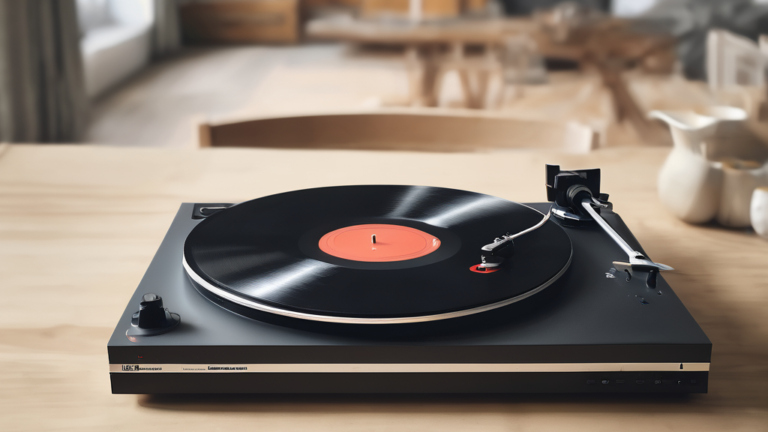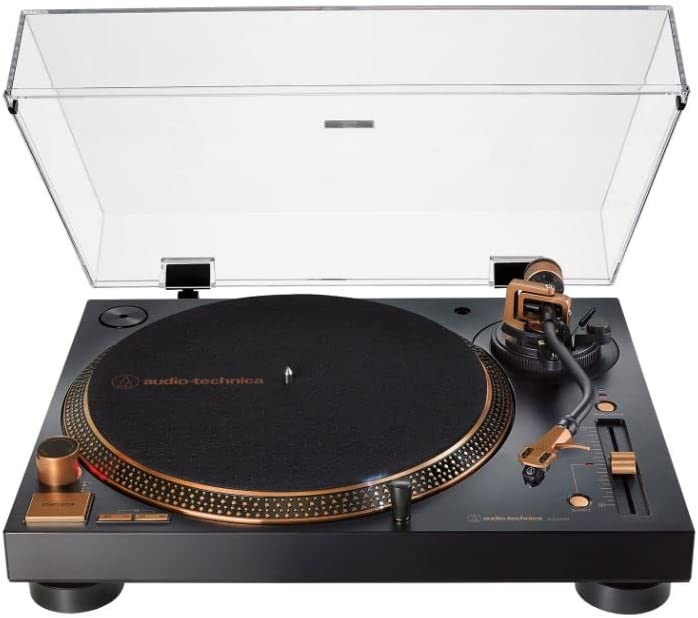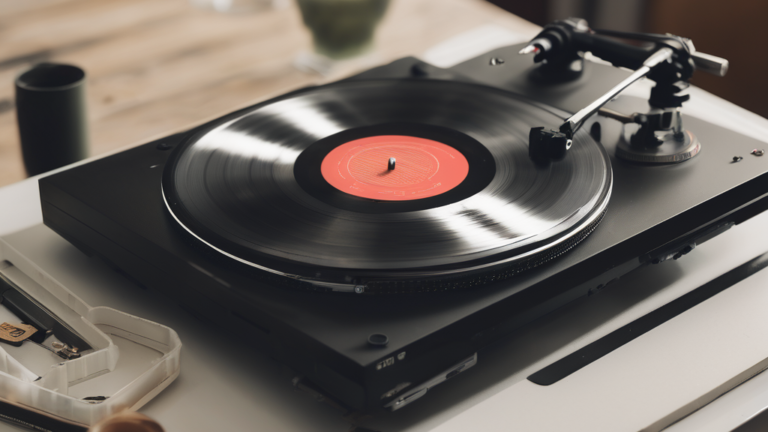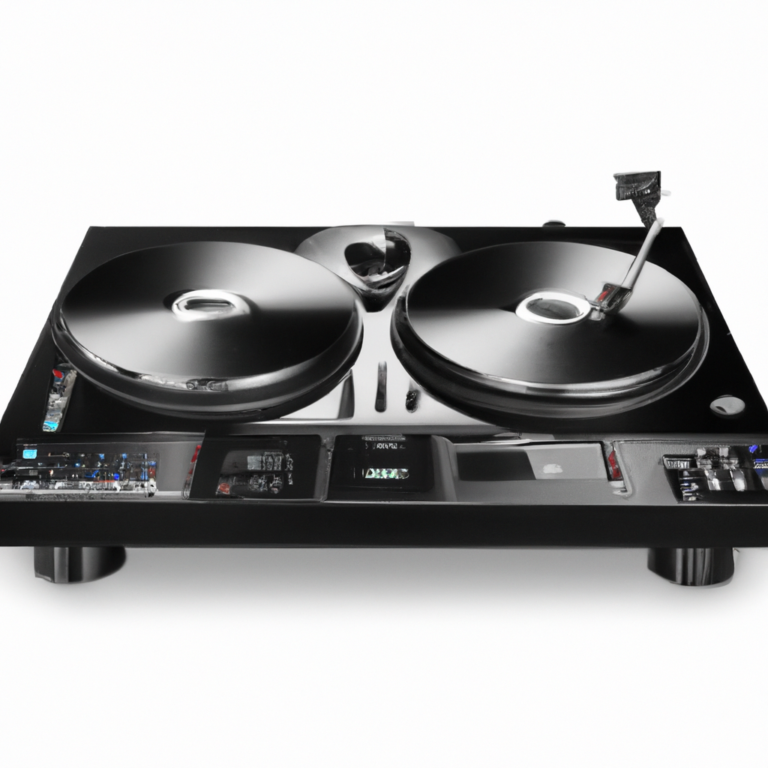Expert Guide on How to Polish Turntable Dust Cover Easily!
There are various methods you can try to polish your turntable dust cover. One popular approach involves sanding the cover with 3000 grit wet sandpaper to remove scratches and then using Meguiars Plastx polish to bring back its shine. Alternatively, you can use a buffing machine with a wool pad and rubbing compound cream for great results.
But before we jump into the polishing process, let’s make sure you have all the necessary tools and supplies. You’ll need a microfiber lint-free cloth, a stylus brush, vinyl brush, anti-static brush, record cleaning solution (optional), 70% isopropyl alcohol (rubbing alcohol), and anti-static dusting spray. These tools will help you effectively clean and maintain your turntable dust cover.
In this guide, I’ll share some easy and effective tips on how to polish turntable dust cover, helping you achieve a crystal clear and scratch-free surface.
Tools and Requirements for Polishing Turntable Dust Cover
These items will help you effectively clean and maintain your dust cover, ensuring it stays in great condition. Here are the tools and requirements you’ll need:
- Microfiber Lint-Free Cloth: A microfiber cloth is a must-have for cleaning delicate surfaces like the dust cover. It’s soft, lint-free material helps to prevent scratches and streaks.
- Stylus Brush: A stylus brush is a small, fine-bristled brush specifically designed for cleaning the turntable’s stylus. It helps remove dust and debris that can affect sound quality.
- Vinyl Brush and Anti-Static Brush: These brushes are used to clean your vinyl records and remove any dust or dirt particles that may have accumulated. Regularly cleaning your records will help prevent dust from transferring onto the dust cover.
- Record Cleaning Solution (Optional): A record cleaning solution can be used for deeper cleaning, especially if your dust cover has stubborn grime. Ensure that the cleaning solution is specifically formulated for vinyl records and is safe for use on your turntable dust cover.
- 70% Isopropyl Alcohol (Rubbing Alcohol): Isopropyl alcohol is an effective cleaner that can be used to remove tough stains or residue from the dust cover. However, it’s important to use a diluted solution (70% alcohol, 30% water) and avoid getting any alcohol on other parts of the turntable.
- Anti-Static Dusting Spray: An anti-static dusting spray helps to reduce static electricity, which can attract dust particles to the dust cover. By using this spray, you can minimize the amount of dust that settles on the cover.
By having these tools and supplies on hand, you’ll be well-equipped to clean and maintain your turntable dust cover, ensuring it remains in optimal condition.
Quick and Easy Steps: How to Polish Turntable Dust Cover
To keep your turntable dust cover looking clean and scratch-free, follow these quick and easy steps:
- Start by using a soft-bristled vinyl brush to gently remove any dust and debris from your records. This will prevent them from transferring onto your dust cover.
- Next, clean the dust cover using a soft, lint-free microfiber cloth and a specialized anti-static dusting spray. This will help remove any fingerprints, smudges, or light dirt that may be present on the surface.
- For the platter and other exposed parts of the turntable, prepare a mixture of rubbing alcohol and water. Dip a microfiber cloth into the mixture and carefully clean these areas. This will remove any grease or grime that may have accumulated.
- Lastly, pay attention to the stylus. Use a stylus brush designed specifically for this purpose to gently dislodge any dust particles that may be stuck to it. This will prevent the dust from falling onto your records during playback.
By following these steps regularly, you can maintain a clear and scratch-free turntable dust cover, ensuring optimal performance and longevity.
A clean dust cover not only enhances the aesthetics of your turntable, but it also protects it from dust and debris, ensuring smooth and uninterrupted playback.
Remember to be gentle and avoid using harsh chemicals or abrasive materials that could damage the surface of your dust cover. Regular maintenance and cleaning will go a long way in preserving the beauty and functionality of your turntable.
| Benefits of Regular Dust Cover Cleaning | Preventive Measures |
|---|---|
| 1. Enhances the overall appearance of your turntable. | 1. Always handle your records with clean hands to prevent transferring dirt onto the dust cover. |
| 2. Protects the turntable from dust, dirt, and potential scratches. | 2. Store your turntable in a clean and dust-free environment when not in use. |
| 3. Ensures optimal sound quality by preventing dust from settling onto the stylus and records. | 3. Use a record cleaning solution to deep clean your vinyl records regularly. |
| 4. Prolongs the lifespan of the turntable by keeping it in good condition. | 4. Invest in a high-quality, protective turntable dust cover to shield it from external elements. |
Tips for Keeping Turntable Dust Cover Crystal Clear
Keeping your turntable dust cover crystal clear is essential for maintaining the overall quality and appearance of your turntable. Follow these tips to ensure that your dust cover stays in pristine condition:
- Regularly dust the cover: Use a soft, lint-free microfiber cloth to gently wipe away dust and debris from the surface of the dust cover. This will prevent any buildup and keep your turntable looking clean.
- Avoid harsh chemicals: When cleaning the dust cover, avoid using harsh chemicals or abrasive cleaners as they can cause damage to the surface. Stick to mild cleaning solutions or simply use water and a soft cloth to gently wipe away any smudges or fingerprints.
- Store properly: When not in use, make sure to keep your turntable covered to protect it from dust and other elements. Use a record sleeve or a dedicated dust cover to keep your turntable safe and clean.
- Keep the area clean: In addition to cleaning the dust cover, it’s important to keep the surrounding area clean as well. Regularly dust and vacuum the area to minimize the amount of dust that can settle on your turntable.
Additional Tips to Maintain Your Turntable Dust Cover
Here are a few additional tips to help you maintain the quality of your turntable dust cover:
- Avoid touching the cover with dirty hands: Always make sure your hands are clean before handling the dust cover. Oils and dirt from your hands can transfer onto the cover and cause stains or discoloration.
- Use a stylus brush: To prevent dust and debris from settling on the stylus, use a stylus brush to gently clean it before each use. This will ensure that your records play without any interference from dust particles.
- Keep pets away: If you have pets, it’s important to keep them away from your turntable and dust cover. Pet hair and dander can easily accumulate and cause damage to both the cover and the turntable itself.
By following these tips and incorporating them into your regular cleaning routine, you can keep your turntable dust cover crystal clear and maintain the overall quality of your turntable for years to come.
How to Clean Vinyl Records for Optimal Sound Quality
When it comes to enjoying your vinyl records, keeping them clean is crucial for optimal sound quality. Dust and grime can affect the playback and even cause damage to your precious collection. By following a few simple steps, you can ensure that your vinyl records sound their best and stand the test of time.
First and foremost, it’s important to remove any dust from your vinyl records. Use a microfiber cloth in a circular motion to gently wipe away the dust particles. This will prevent them from causing surface noise and affecting the overall sound quality.
For a deeper clean, consider using a vinyl cleaning brush to clean along the grooves of the records. This will help to remove any embedded dirt and grime.
If there are stubborn stains or grime on your records, you can use a record cleaning solution. Apply a small amount of the solution to a microfiber cloth and gently rub it on the affected areas. Be careful not to use excessive pressure as this can damage the record. The record cleaning solution will help to dissolve and lift the dirt, leaving your vinyl clean and ready for playback.
Finally, it’s important to store your vinyl records properly to maintain their sound quality. Always store them in protective sleeves to prevent dust and scratches. Additionally, avoid placing them in direct sunlight or in areas with high humidity as these conditions can warp the records.
Summary:
- Remove dust from vinyl records using a microfiber cloth in a circular motion.
- For a deeper clean, use a vinyl cleaning brush to clean along the grooves.
- If needed, use a record cleaning solution and a microfiber cloth to remove stubborn stains or grime.
- Store your vinyl records in protective sleeves and avoid exposure to direct sunlight or high humidity.
Conclusion
Polishing your turntable dust cover is a crucial part of maintaining its appearance and longevity. By following the expert tips provided in this guide, you can easily restore its shine and keep it looking clean and clear.
Remember to start by removing any dust and debris from your records and the dust cover itself. Use a soft-bristled vinyl brush and a microfiber cloth to gently clean the surface. If you encounter scratches or stubborn grime, consider using a record cleaning solution or sandpaper to achieve the best results.
Additionally, it’s important to keep your turntable stylus clean and store your vinyl records properly to prevent dust buildup. Regular cleaning and maintenance will not only ensure optimal sound quality but also extend the life of your turntable dust cover.
So, don’t neglect the care of your turntable dust cover. With the right tools and techniques, you can enjoy a polished and well-maintained cover that will enhance your listening experience for years to come.
FAQs
What is the best method to polish a turntable dust cover?
One method involves sanding the cover with 3000 grit wet sandpaper to remove scratches and then polishing it with Meguiars Plastx polish. Another method suggests using a buffing machine with a wool pad and rubbing compound cream.
What tools and supplies are needed to polish a turntable dust cover?
You will need a microfiber lint-free cloth, a stylus brush, a vinyl brush and anti-static brush, a record cleaning solution (optional), 70% isopropyl alcohol (rubbing alcohol), and anti-static dusting spray.
How can I effectively clean and maintain my turntable dust cover?
Use a soft-bristled vinyl brush to remove dust and debris from your records, clean the dust cover with a soft, lint-free microfiber cloth and anti-static dusting spray, and clean the platter and exposed parts of the turntable with a microfiber cloth dipped in a mixture of rubbing alcohol and water. Additionally, clean the stylus with a stylus brush to dislodge any dust particles.
How can I remove stubborn grime from my turntable dust cover?
You can use a record cleaning solution sprayed on the dusty areas and gently rub it with a microfiber cloth.
How can I keep my turntable dust cover clear and in great condition?
Wipe down your vinyl records with a microfiber cloth before and after playing them, store your records in sleeves to protect them from dust, and keep your turntable stylus clean to avoid transferring dust to your records.
How do I clean vinyl records for optimal sound quality?
Use a microfiber cloth to wipe the record in a circular motion to remove dust. For a deeper clean, use a vinyl cleaning brush to clean along the grooves. Use a record cleaning solution and a microfiber cloth to remove stubborn grime if needed. Lastly, store your vinyl records in sleeves to protect them from dust.
Our Mission: At AudioInspects, we are dedicated to providing the most comprehensive and authentic reviews of audio equipment on the market. We conduct independent testing and research of products, so you can make an informed decision before making a purchase. Our mission is to help you find the best audio equipment to improve your listening experience. So trust us to deliver the most reliable recommendations and advice.
Disclosure: When you do decide to make a purchase through our links, please note that we may earn a commission, but this does not affect the honesty of our reviews. You can read our affiliate disclosure in our Disclosure.






